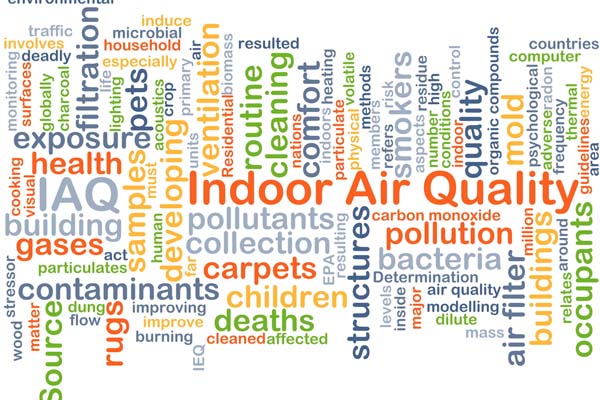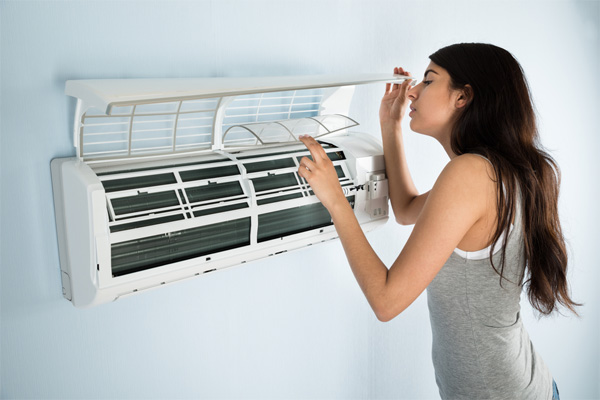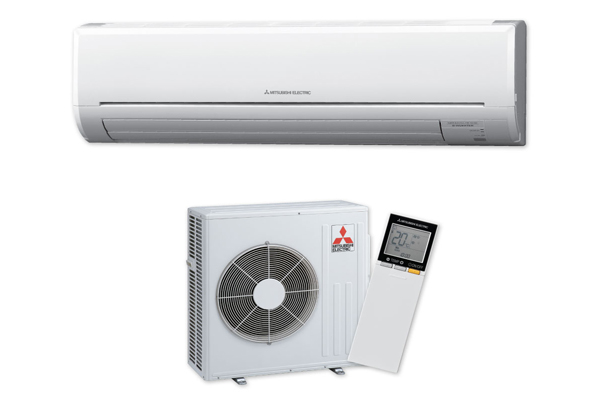
The United States Environmental Protection Agency states that the air inside your home is ten times more polluted compared to the air outside. These pollutants keep your home dusty. They can also trigger existing health problems such as respiratory conditions like asthma. They can also contribute to the development of new problems like allergies.
Installing a ductless HVAC system, otherwise known as a mini-split, in your home is an excellent way to improve your indoor air quality. Compared to a traditional HVAC system, a ductless unit has a few more benefits when it comes to improving your indoor air quality. These benefits include controlling your home’s humidity levels. They also reduce dust, pollens, allergens, and other particulates in your home.
Ductless HVAC Systems & Indoor Air Quality: What You Need To Know
Contents
- 1 Ductless HVAC Systems & Indoor Air Quality: What You Need To Know
In this article, we discuss indoor air quality, the causes of poor air quality, and how ductless mini-split systems can help clean the air in your home.
Common Indoor Pollutants
Below, we share a list of the pollutants that many homeowners commonly find indoors. These are as follows:
Secondhand Smoke
Tobacco smoke affects more than just the active smoker. Passive smoking is when people other than the smoker inhales the smoke. It happens when tobacco smoke enters an area, and the people present within that space inhale the smoke. Unfortunately, secondhand tobacco smoke exposure can lead to many diseases, disabilities, and even death.
Molds
Mold arises from one of two ways. The first one is through natural substances like plant pollen and animal dander that release into the air. The second is because moisture induces mold colonies. Moisture can come from plumbing leaks, condensation from improper ventilation, and ground moisture penetration.
Mold is highly dangerous, especially to children, elderly, and people who suffer from respiratory illnesses like asthma. Some varieties of mold, such as black mold, can cause nausea, dizziness, and chronic coughing. It can also cause sneezing, rashes, and persistent headaches.
Radon
Radon is an invisible and radioactive atomic gas. After rock formations decay, it releases radon. You can find radon underneath buildings or, in rare cases, building materials. It is a hazard to indoor air as it causes tens of thousands of deaths from lung cancer every year in the US and Europe alone. A home that is for sale must be tested for radon gas by a licensed expert in some US states.
Volatile Organic Compounds (VOCs)
VOCs are gases emitted by some liquids or solids. They are consistently higher indoors than outdoors as various products commonly found inside a home emit VOCs. These include paint strippers, paints and lacquers, cleaning supplies, glues, permanent markers, correction fluids, and copiers, to name a few. Some VOCs, unfortunately, have adverse health effects.
Carbon Dioxide (CO2)
Humans release carbon dioxide as it correlates with human metabolic activity. Therefore, humans are the main source of indoor carbon dioxide. High levels of CO2 can cause headaches, drowsiness, and lower energy levels.
Asbestos Fiber
Asbestos is commonly found in older homes and buildings as it was a component of building materials used before 1975. These include ceiling and floor tiles, shingles, taping muds, pipe wrap, mastics, and other insulation materials. Asbestos is dispersed into the air when these building materials are drilled, sanded, or cut. Long exposure to asbestos causes lung cancer.
Nitrogen Dioxide
If you have a propane or natural gas stove, it emits nitrogen dioxide. When combined with sunlight, it produces ozone. Nitrogen dioxide is an irritating gas that, when inhaled at high levels, can cause wheezing even if you do not have asthma.
Bacteria
Indoor air also houses various forms of bacteria, including bacteria that humans shed. Some of the bacteria in indoor air are Mycobacterium tuberculosis, Streptococcus pneumonia, and staphylococcus aureus.

Why Do You Need Improved Indoor Air Quality?
An average person spends nearly 90 percent of their time indoors. This significant period spent indoors means that the air a person inhales can impact their overall health and comfort. To put it simply, if you improve your indoor air quality, then you also improve the quality of life for you and your family.
To better understand this, we have listed a few things improved indoor air quality does to help you and your family.
Better Health And Well-Being
Poor indoor air quality has been linked with many adverse side effects, especially concerning one’s health. Lingering contaminants in your indoor air can cause eye irritation, coughs, sneezing, headaches, dizziness, and nausea. Other severe consequences include skin allergies and respiratory illnesses like asthma or lung cancer.
Do you find that you and your family are sniffling a lot more lately, even with good weather? If so, then you are probably suffering from poor indoor air quality. The good news is, you can do something about improving your IAQ. When done correctly, then you will notice an immediate improvement in you and your family’s health and well-being. Reducing the pollutants indoors as soon as possible ensures that there won’t be any long-term harmful effects to you and your family.
Improve Cognitive Functions
A study made by Harvard’s School of Public Health’s Center for Health and the Global Environment stated that indoor air quality significantly impacts the building occupants’ cognitive functioning. They found that participants who work in an environment with an enhanced green indoor air quality performed 172 and 299 percent higher than those who worked in a conventional environment.
Therefore, when you have high indoor air quality, you can expect to reap benefits on your cognitive functions. Company managers and business owners can use this information to their advantage. They will find that improving their indoor air quality is a good investment as it increases the occupants’ performance and, in turn, it increases their profits.
Fresher Air
Various smells emanate across your homes, such as home-cooked food or musty smell coming from your beloved pet. It might not be possible to keep an open window to let fresh air in. Without proper ventilation, all of these smells will mix without any way out. You’ll soon find that your home has an unpleasant odor.
Bad odors can be distracting and, in some cases, can even cause headaches. With improved indoor air quality, you can breathe in fresher air. You can breathe easy as there isn’t any heavy, smelly, or stale smell hanging into the air. This means that you can function without dealing with unpleasant odors from all the nooks and crannies of your home.
How A Ductless Mini-Split Improves IAQ
To help improve your IAQ, install a ductless heating and cooling system. Also known as a mini-split, a ductless unit can keep you cool during the summer and warm during the winter. It also helps you breathe more easily.
Multi-Stage Filtration
Ductless mini-split systems have advanced multi-stage filtration. These air filters can trap large airborne contaminants and smaller particles. Smaller particles, such as mites, dander, and pollen, trigger allergies, set off respiratory conditions, and cause other sicknesses. With a ductless mini-split in place, you can rest easy knowing that it can eliminate major allergens and other airborne contaminants no matter how small. In fact, depending on the model you install, a ductless unit can remove up to 99.9 percent of all indoor air pollutants.

No Ductwork
Ductwork tends to collect excessive dust, VOCs, insect droppings, bacteria, and more as time passes. When conditioned air passes through the ductwork and into your home, it brings these contaminants with it. Energy Star also states that up to 30 percent of US homes have ductwork leaks. These leaks cause energy loss and your monthly utility bills to skyrocket. They are also additional entryways for pollutants to gain access to your home.
With a mini-split in place, you do not have to worry about ductwork. Likewise, you do not have to worry about the issues that come with it. A ductless system allows clean air to flow straight from the outdoor unit to the indoor air handler for each zone of your home.
Humidity Control
A ductless system controls humidity during its cooling cycle. The refrigerant in a ductless system absorbs the heat indoors, which in turn cools your home. It also makes the air less capable of holding moisture. The moisture that the mini-split absorbs is condensed into liquid before it properly disposes of it through the drain line.
A ductless mini-split features excellent humidity control via its inverter technology. Compared to traditional ACs, a ductless system has longer and slower operational times. It maintains the desired temperature by making small adjustments to the output. This also means that it has more time to remove indoor humidity. In turn, your home’s humidity is better controlled and reduced.
Keep Out Pests
A ductless system only requires a small hole to run a few feet of conduit through. This conduit is what links the outdoor unit to the indoor one. Unlike with a window air conditioner, a ductless system is more secure and helps keep critters and other insects away from your home. When you want to keep your family safe and healthy, installing a ductless system is always a smart decision.

Conclusion
If you are interested in improving the indoor air quality in your home, consider purchasing and installing a ductless mini-split for your home. It is an excellent choice when you are looking for quality air filtration and humidity control. It is also an excellent way to reduce your home’s heating and cooling costs. Contact your local qualified HVAC technician to assist you with your ductless mini-split installation today.
Check Out One Of Our Ductless Installation Projects
Call PFO Heating & Air Conditioning For All Of Your HVAC Requirements
Call PFO Heating & Air Conditioning, a leading HVAC service provider in the area. We offer HVAC installation, repairs, and tune-ups with fast delivery of service, accuracy, and reliability. Our HVAC service company has years of experience in the industry and offers practical solutions for your home air conditioning at affordable prices. Call PFO Heating & Air Conditioning for a free estimate when you need affordable, considerate, friendly service delivered in a timely fashion.
Click here to contact us now or call us at (800) 253-9001 to find out more!



